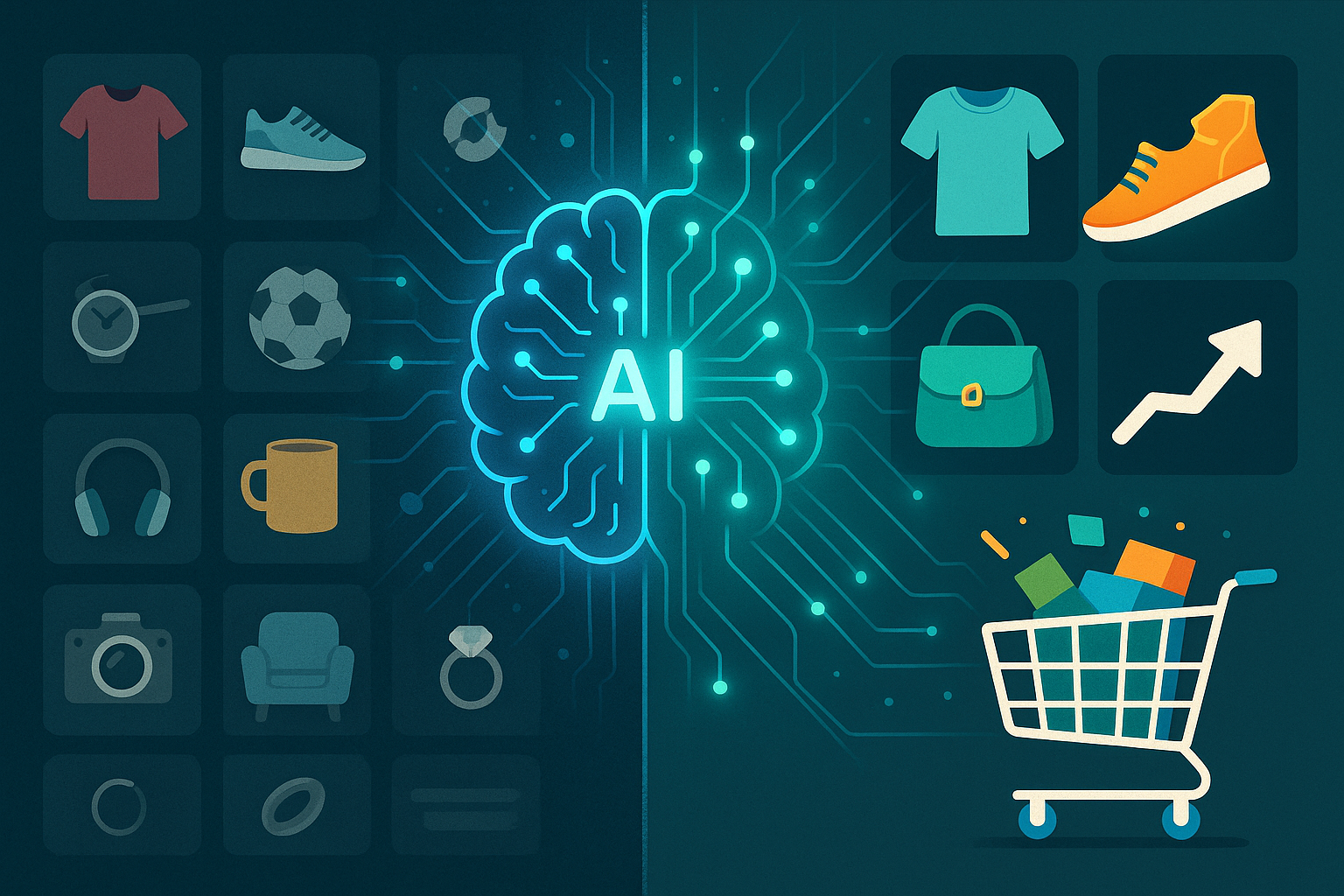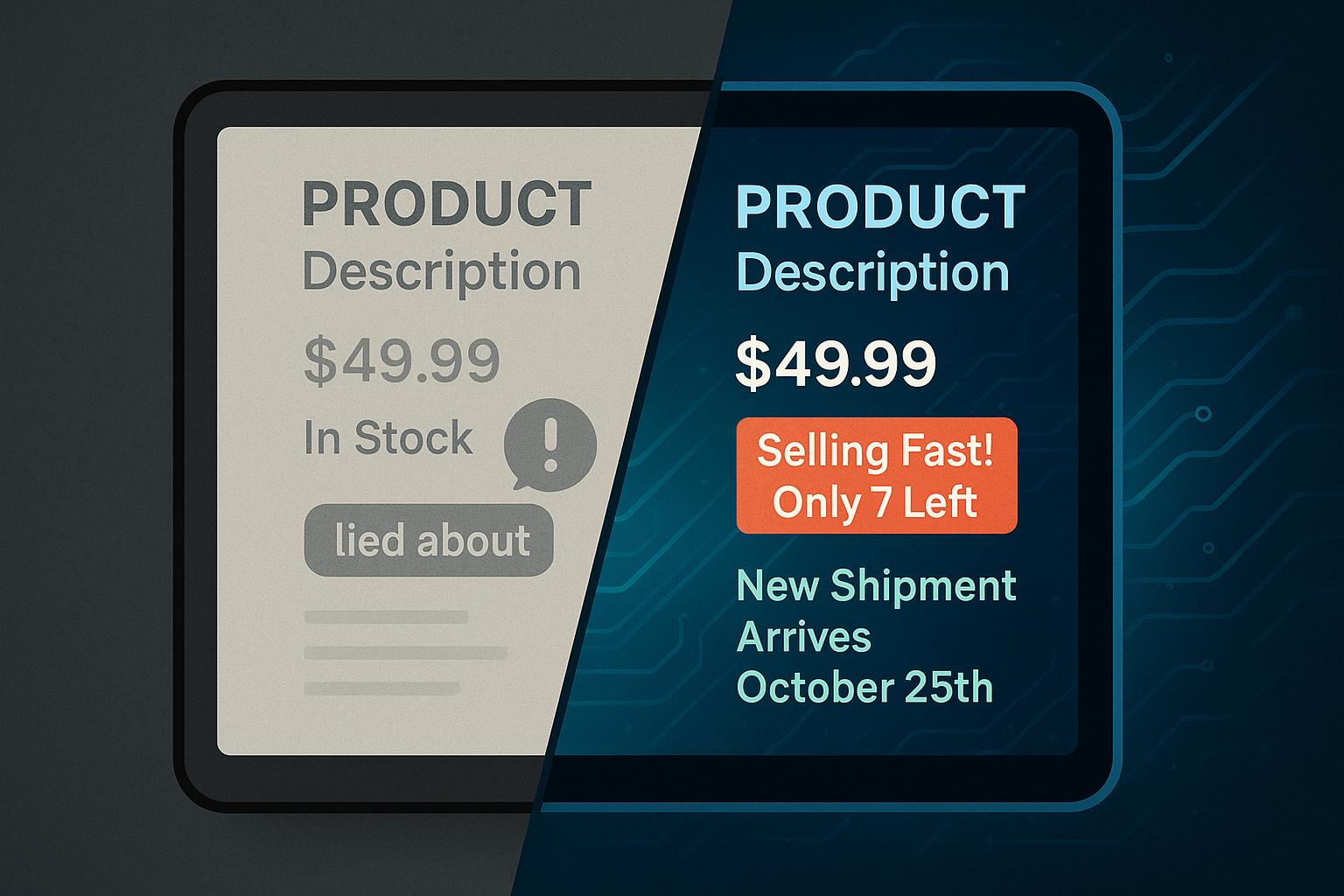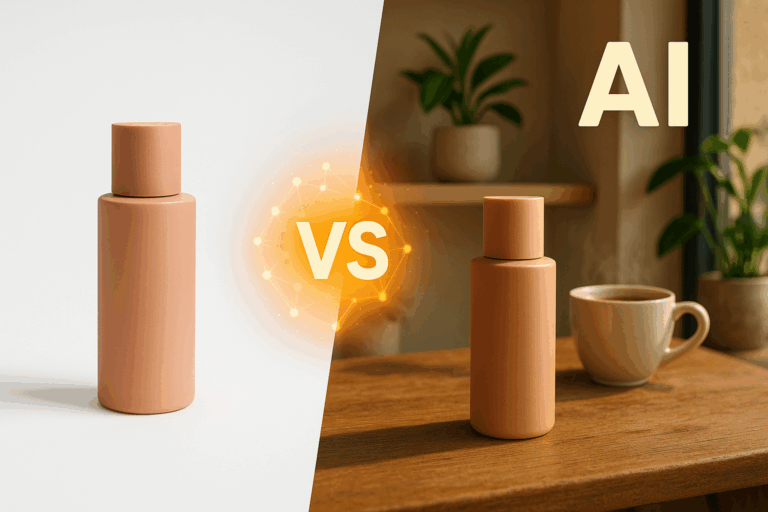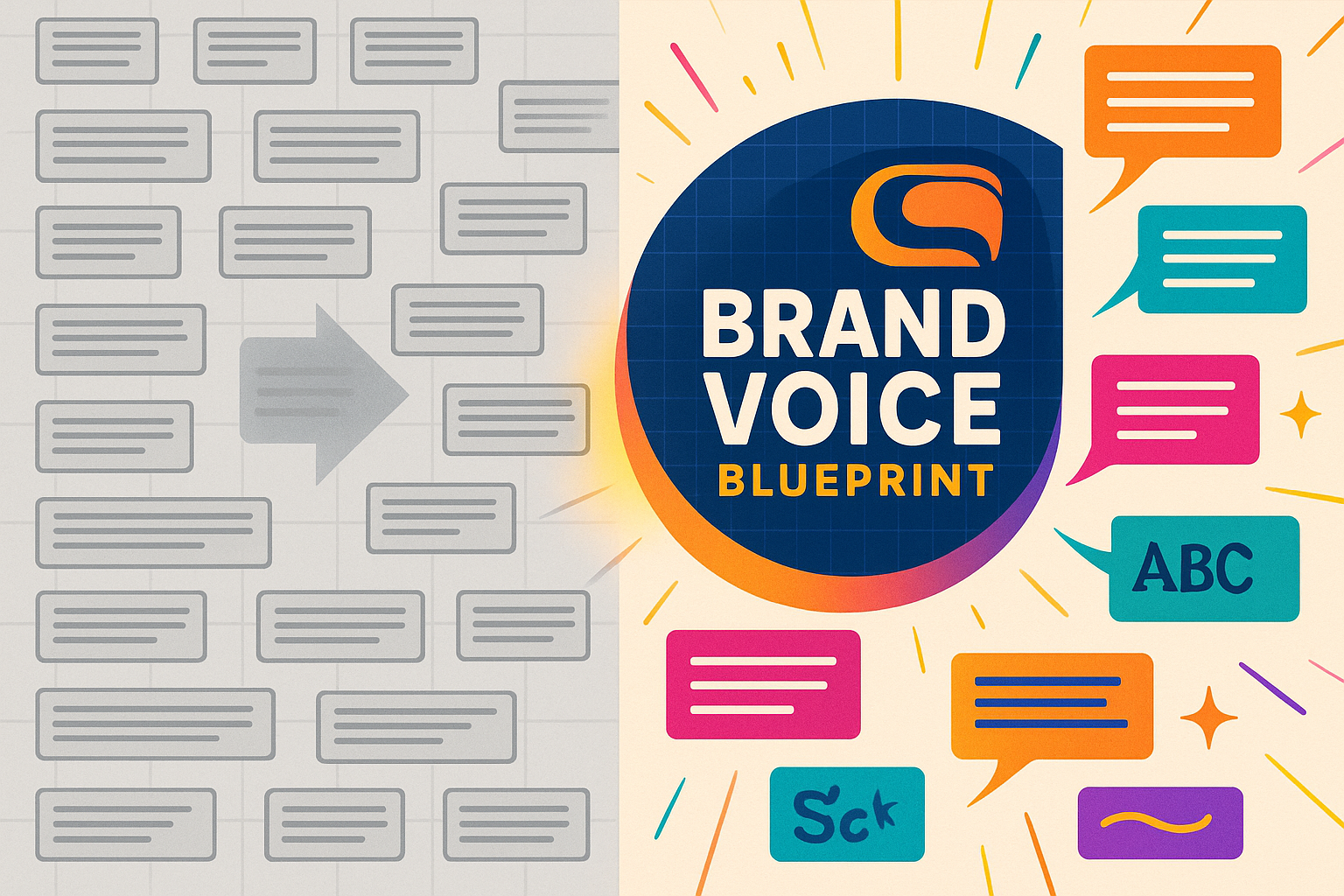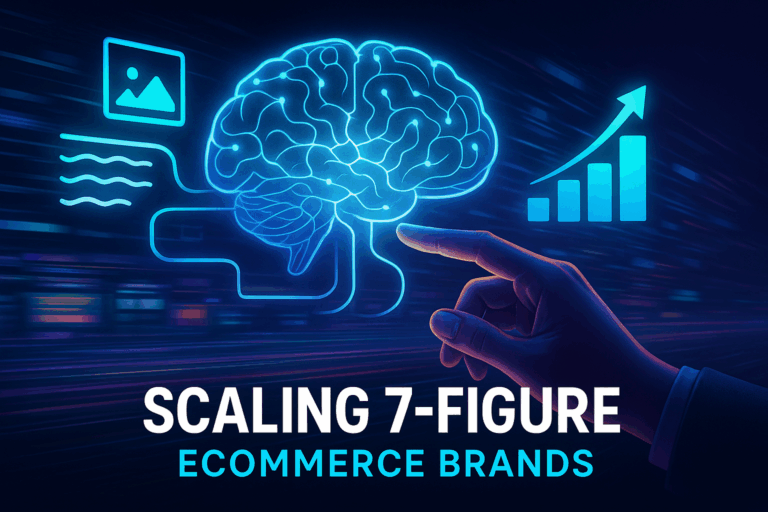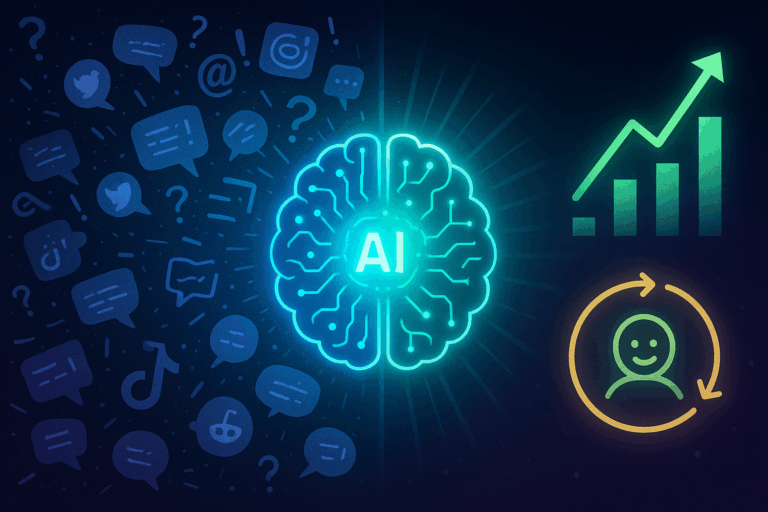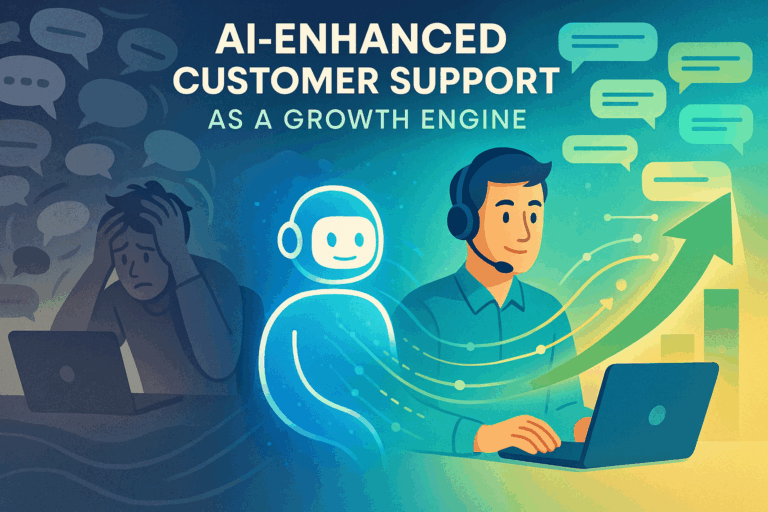Ever felt like an online store just gets you? You click on a pair of hiking boots, and suddenly you’re seeing the perfect wool socks and a durable backpack—not a random assortment of coffee mugs and cat toys. That isn’t magic. It’s an AI recommender system at work, transforming a generic product grid into a personalized shopping experience.
For years, brands have chased the elusive goal of personalization. But most are still showing the same homepage to every visitor. The opportunity is real, but so is the noise. AI isn’t just about adding a “customers also bought” widget anymore. It’s a powerful engine for customer acquisition and retention that, when used strategically, can dramatically lift conversion rates, average order value (AOV), and long-term loyalty.
Let’s cut through the hype and explore how these systems actually work—and what it means for your brand’s bottom line.
What Exactly Is an AI Recommender System?
At its core, an AI recommender system is a sophisticated filtering tool that predicts what a user might want. Instead of manually curating product collections, the AI analyzes vast amounts of data to surface relevant items in real-time.
Think of it as the world’s most attentive shopkeeper—one who remembers every customer’s preferences, style, and past purchases, and uses that knowledge to make helpful suggestions.
The fuel for this engine is data. The AI sifts through patterns in:
- Browsing History: What products has a user viewed, clicked on, or spent time looking at?
- Purchase Data: What have they bought in the past? What items are frequently purchased together?
- User Profiles: Demographic information like age, location, or stated interests.
- Product Information: Attributes like brand, color, category, and price.
These systems generally operate on one of three models, though the most powerful solutions combine them.
Collaborative Filtering: Learning from the Crowd
This is the principle behind Amazon’s famous “Customers who bought this also bought…” feature. The algorithm doesn’t need to know anything about the products themselves. It just analyzes user behavior.
The logic is simple: If Customer A and Customer B have similar purchase histories, and Customer A just bought a new product, there’s a good chance Customer B will like it, too. It uses the “wisdom of the crowd” to make connections you might never spot manually.
Content-Based Filtering: It’s All in the Details
This method focuses on product attributes. If you watch a lot of science-fiction thrillers on Netflix, the platform recommends more movies with the “sci-fi” and “thriller” tags.
In e-commerce, if a customer buys a pair of minimalist white leather sneakers, a content-based system might recommend other minimalist sneakers, products from the same brand, or items tagged as “classic footwear.” It’s great for stores with detailed product catalogs and is a key reason why well-structured proprietary feed strategies are so crucial for effective AI.
Hybrid Models: The Best of Both Worlds
Most modern recommender systems, including those used by giants like Amazon and countless Shopify plugins, use a hybrid approach. They combine the crowd-sourced intelligence of collaborative filtering with the attribute-driven logic of content-based filtering. This approach provides more accurate and diverse recommendations, overcoming the limitations of using a single method.
AI in Action: From Data Points to Dollars
It’s one thing to understand the theory, but what does this look like in practice? Let’s follow a customer’s journey.
Imagine a shopper lands on your home decor site for the first time. They click on a mid-century modern armchair. The AI immediately gets to work:
- Initial Recommendation: The product page shows “Complete the Look” items (a matching ottoman, a floor lamp from the same collection) using content-based filtering.
- Behavioral Learning: The shopper adds the chair to their cart but continues browsing, clicking on a walnut wood coffee table. The AI notes this preference for “mid-century” style and “walnut” material.
- Real-Time Personalization: As they return to the homepage, the main banner, once generic, now displays a curated collection of mid-century modern living room furniture. The “Recommended for You” section is filled with walnut decor pieces.
- Conversion and Upsell: During checkout, a collaborative filtering module suggests, “Shoppers who bought this chair also loved this area rug,” increasing the AOV.
This seamless, responsive journey makes the customer feel understood and guided, not just sold to.
The business impact is undeniable. When you connect customers with products they genuinely want, three things happen:
- Conversion Rates Increase: Reducing the friction of finding the right product means more browsers become buyers. Studies have shown personalization can lift revenues by 5-15%.
- Average Order Value (AOV) Grows: Smart cross-sells (“Goes well with…”) and upsells (“Upgrade to…”) are far more effective when they’re relevant. Recommender systems can boost AOV by as much as 50%.
- Long-Term Loyalty Is Built: Customers return to stores that make shopping easy and enjoyable. A great personalization strategy turns one-time buyers into loyal brand advocates.
The Real-Talk Guide: Common Hurdles and How to Clear Them
Implementing an AI recommender system isn’t a magic bullet. It’s a powerful tool, but it comes with challenges. Being aware of them is the first step toward building a truly effective strategy.
The “Cold Start” Problem
The Challenge: What do you recommend to a brand-new visitor the AI knows nothing about? Or how do you get a newly launched product into the recommendation mix when it has no sales history?
The Solution: This is where hybrid models shine. For new users, you can start by showing sitewide bestsellers, trending items, or products related to how they landed on your site (e.g., from a specific ad campaign). For new products, content-based filtering is key, as it can recommend the item based on its attributes without needing purchase data.
The Data Quality Dilemma
The Challenge: AI algorithms are powerful, but they’re not mind-readers. If your product data is messy, incomplete, or inaccurate, the AI will deliver “garbage in, garbage out” recommendations.
The Solution: Prioritize data hygiene. Ensure your product feeds are clean, standardized, and rich with attributes. This foundational work pays massive dividends, as high-quality data is the bedrock of any successful AI initiative.
Avoiding the “Filter Bubble”
The Challenge: A hyper-personalized system can sometimes be too good, showing customers only things it knows they’ll like. This can stifle discovery and prevent them from finding new products or categories they might have loved.
The Solution: Inject some diversity into your recommendations. You can configure your system to include a mix of highly personalized picks alongside “trending” or “new arrival” items to encourage exploration.
Beyond Recommendations: The Future is Generative
The landscape is already evolving. The next frontier isn’t just about recommending existing products; it’s about using AI to create entirely new and personalized shopping experiences. This emerging field is known as Generative Engine Optimization (GEO), where AI helps you become the definitive answer wherever your customers are searching.
Imagine an AI that doesn’t just suggest a shirt but generates a unique product description for a shopper based on their style preferences. Or an AI that helps you stay ahead by not just tracking what your rivals are doing but recommending strategic moves in response. An Ecommerce Competitor Spy Tool powered by AI can provide that actionable intelligence.
This is also where tools like an SEO AI Agent for Ecommerce come into play, creating brand-aligned content at scale that speaks directly to different customer segments.
AI isn’t replacing strategy—it’s amplifying it.
Frequently Asked Questions (FAQ)
What’s the difference between personalization and customization?
Customization is when a user manually adjusts their experience (e.g., selecting their interests). Personalization is when the system automatically adapts the experience for the user based on their behavior, which is what AI recommender systems do.
Do I need a huge budget to use AI recommendations?
Not anymore. While giants like Amazon build their own systems, platforms like Shopify have a rich app ecosystem with powerful and affordable AI recommendation plugins. The technology is more accessible to small and medium-sized businesses than ever before.
How do I measure the success of a recommender system?
Look at key metrics like click-through rate (CTR) on recommended products, conversion rate from recommendation widgets, and the impact on overall AOV. Many tools have built-in analytics dashboards to track this performance.
Can AI recommendations be wrong?
Yes. An AI’s output is only as good as its data and its algorithm. Irrelevant recommendations can happen, especially if the data is sparse or the system isn’t configured correctly. That’s why it’s crucial to monitor performance and refine your strategy over time.
Your Next Step in Personalization
Understanding the “what” and “why” of AI recommender systems is the first crucial step. These tools are no longer a luxury for e-commerce giants; they are becoming a fundamental component of a modern digital strategy. By delivering relevant, timely, and personal experiences, you can do more than just sell products—you can build lasting relationships with your customers.

